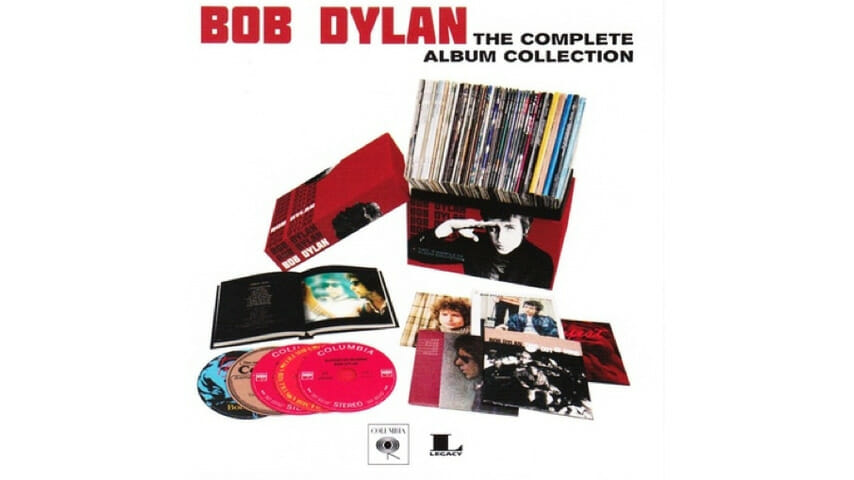Bob Dylan: The Complete Albums Collection

When presented with 52 years of living packed into 35 studio and six live albums, it’s almost impossible to know where to start when whole books have been written about a single Bob Dylan song. There’s been so much water under the bridge, so many cultural movements, wars, presidents, assassinations, disasters—man-made and natural—that have spanned the years of Dylan’s creative career that it’s dizzying to even consider putting his work into context. How do you reconcile an artist whose song “Blowin’ in the Wind” was sung at The March On Washington before Martin Luther King gave his “I Have A Dream” speech in 1963 with the man who gave his blessing for “Love Sick” to be used in a Victoria’s Secret television commercial? Does it even matter? Obviously, Dylan’s is a music that has permeated every level and machination of society from the sacred to the political to the outrageously commercial. It is likely that no other living artist’s work and life has been so thoroughly examined and distorted with so many cloaks thrown over his body of work in an attempt to encapsulate and make sense of it.
It’s almost too much to house so much music together under a single cover, and my greatest worry with sets like this—if there are any other sets like this—is that the sheer volume of output listeners are presented with will overwhelm them and prevent them from absorbing all that is on offer. It is also true that the prevalence of illegal downloading and the emergence of services like Spotify have taken away the pleasure and diminished the nearly sacred experience that purchasing, unwrapping and listening to a new recording once had. It’s too easy now to simply acquire music en masse and not give any of it the time that it deserves to slowly unfold and insinuate itself into our hearts and ears. So, as a remedy to this kind of sensory overload and the subsequent numbing that it brings, I started listening to all of Bob Dylan’s albums in order, one or two a day, to really prepare for writing this piece.
In many ways, it’s been a musical journey like no other. Like anyone reading this, I have my favorite Dylan songs and can remember vividly the times, situations and people I was with when I heard them or when they were especially important to me. As was the case for so many other people I’ve met, the songs on Blood on The Tracks and Desire steered me through disastrous breakups. Positively Fourth Street was the perfect evocation of how I felt during any number of adolescent betrayals. I’m sure you could write down a dozen memories and associations of your own that would be every bit as biting, poignant and triumphant as anything I could come up with.
For the record, here are a few notes I made while listening again through Dylan’s albums—some of which I hadn’t really sat down and paid attention to for decades:
“Song To Woody” from the debut album is a song that I will never tire of. It is one of those rare campfire tunes that I have never heard performed badly.
“Don’t Think Twice, It’s Alright” is a song that always sounds true no matter how many times I hear it. The sound of the back gate creaking as the singer makes a break and hits the road before dawn gets sadder as the years pass.
The music on Bringing It All Back Home and Blonde On Blonde still sounds like it comes from another planet. In a thousand years, it will still be just as driven, singular and weird.
“Sara” is one of the saddest, most ripping songs every recorded. It still brings hurt when I listen to it 30 years later. I can understand how would be impossible for him to sing this song in concert. I have felt uncomfortable over the years when drunks in the crowd have screamed to hear it.
-

-

-

-

-

-

-

-

-

-

-

-

-

-

-

-

-

-

-

-

-

-

-

-

-

-

-

-

-

-

-

-

-

-

-

-

-

-

-

-








































